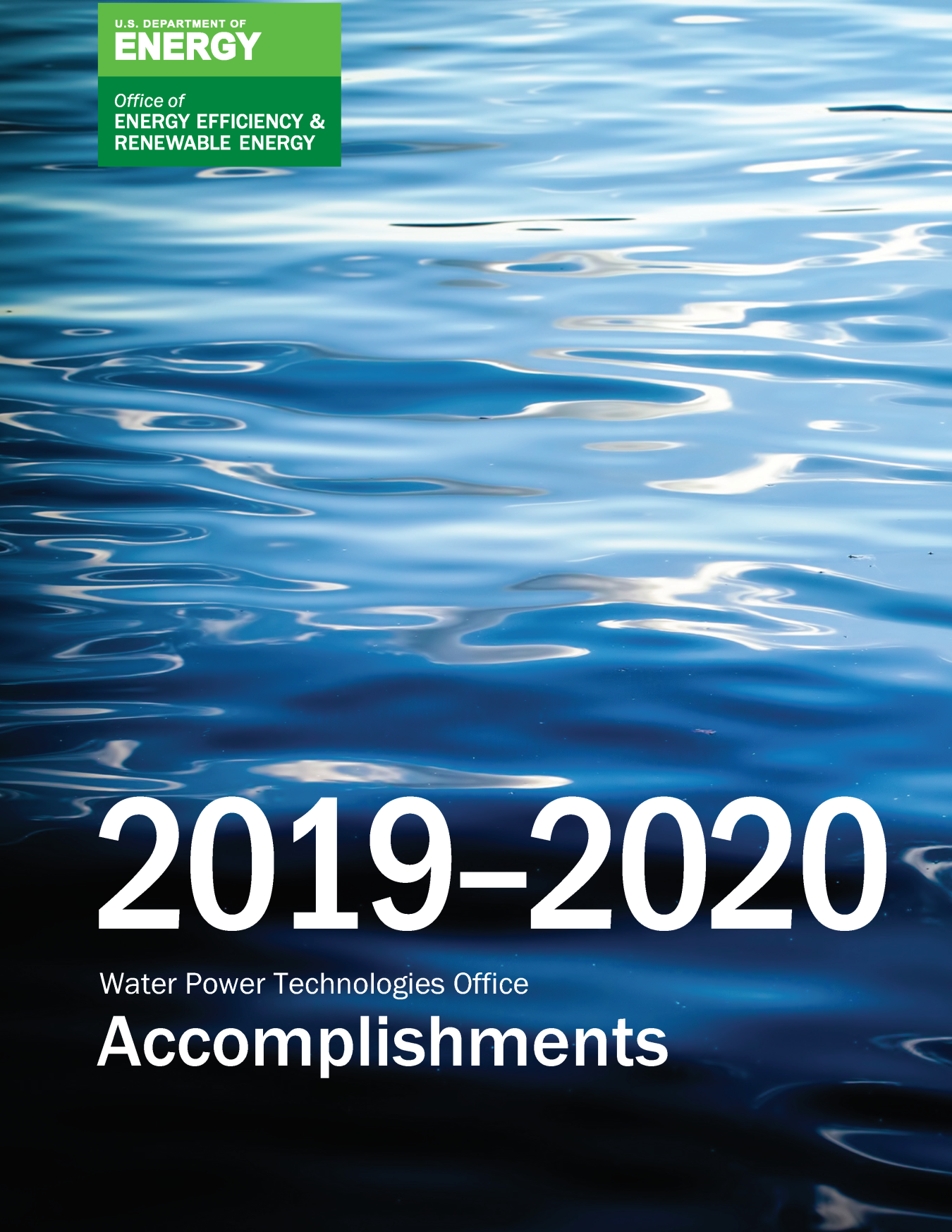Letter from the Water Power Technologies Office Director, Alejandro Moreno
Water Power Technologies Office
January 14, 2021Dear friends and colleagues,
On behalf of the U.S. Department of Energy Water Power Technologies Office (WPTO), I am delighted to present our 2019–2020 Accomplishments Report. In this report, we summarize some of the significant results from WPTO-supported research across the Hydropower and Marine Energy (formerly the Marine and Hydrokinetics) programs. While not intended to be a comprehensive overview of all the impactful projects within WPTO’s portfolio, this report highlights some of the achievements from the past 2 years. These accomplishments include successful laboratory and in-water tests of promising technologies, commercialization of environmental monitoring instrumentation, the release of new modeling code and decision-support tools, and efforts to improve open access to data. Many of these projects were supported through our traditional funding opportunity announcements, as well as by leveraging a variety of support mechanisms such as prizes, competitions, and notices of technical assistance.
I would also like to sincerely thank all our awardees, partners, and staff who contribute so much time and energy to making the important work we support possible. It is their efforts, taking place in laboratories, rivers, and oceans across dozens of states, that drive important scientific advances in hydropower and marine renewable energy technologies. And it is this work that will prepare the U.S. hydropower fleet to be a keystone of our renewable energy future and allow the sea itself to become a source of low-cost, renewable energy that ocean industries and coastal communities increasingly depend on.
Additionally, I want to express my appreciation for all the valuable feedback we receive from stakeholders and industry experts. One of our formal feedback mechanisms is our biannual Peer Review, a comprehensive and public evaluation of our program strategies and projects. We organized our most recent review in late 2019 and received valuable feedback on our work, including new areas where water power technologies can have significant impacts like leveraging hydropower’s full range of grid benefits and marine energy applications in the Blue Economy. We also receive helpful input regularly via requests for information (published via the Federal Register) and public workshops. We continually apply these insights to improve our work.
For this first compilation of accomplishments, we cover successes achieved in 2019 and 2020. In the “Looking Forward to 2021” section, we highlight a few projects we predict will have significant results in 2021. I hope readers enjoy learning about the different areas of our portfolio, and I encourage them to get in touch with associated project teams for more information—email addresses for project points of contact are listed within each write-up. For more general inquiries, readers can also email the WPTO inbox. This document is a testament to the hard work and devotion of our partners who lead these research and development projects; thank you all again.
Sincerely,
Alejandro Moreno
Director, Water Power Technologies Office
Office of Energy Efficiency and Renewable Energy
U.S. Department of Energy
Hydropower Program 2019-2020 Accomplishments
-
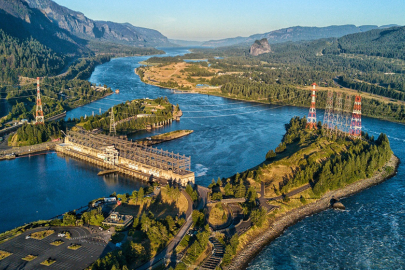 Rapid changes in the U.S. electricity system have created new needs for grid services that hydropower and PSH are well-suited to provide.
Rapid changes in the U.S. electricity system have created new needs for grid services that hydropower and PSH are well-suited to provide. -
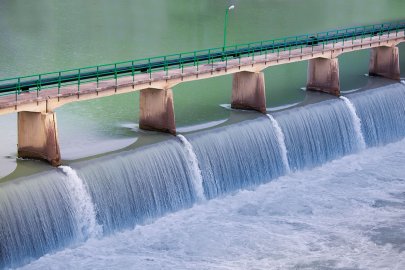 In October 2019, WPTO selected four grand prize winners for the Furthering Advancements to Shorten Time (FAST) Commissioning for PSH Prize.
In October 2019, WPTO selected four grand prize winners for the Furthering Advancements to Shorten Time (FAST) Commissioning for PSH Prize. -
 Three national laboratories are demonstrating the technical and economic benefit of integrating run-of-river plants with energy storage.
Three national laboratories are demonstrating the technical and economic benefit of integrating run-of-river plants with energy storage. -
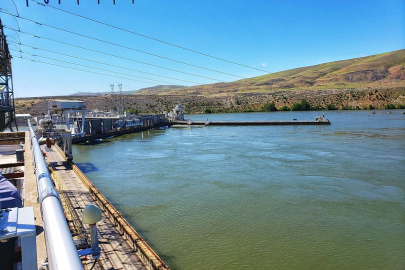 The GLIDES project investigated a new form of PSH with promising estimated returns on investment for potential future commercial projects.
The GLIDES project investigated a new form of PSH with promising estimated returns on investment for potential future commercial projects. -
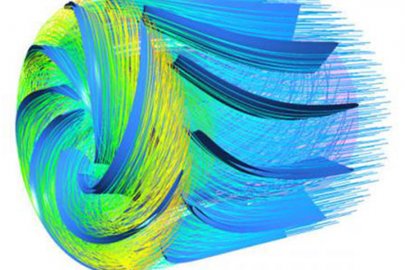 Obermeyer Hydro, Inc.’s novel PSH system reduces capital costs, negative environmental impacts, and geological risks associated with PSH development.
Obermeyer Hydro, Inc.’s novel PSH system reduces capital costs, negative environmental impacts, and geological risks associated with PSH development. -
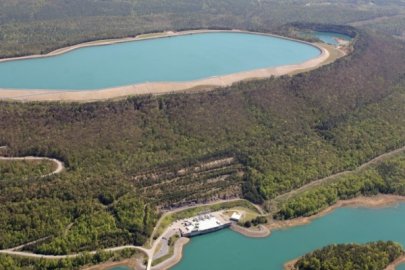 A new study distinguishes between different PSH configurations and discusses ways to minimize potential effects on the environment.
A new study distinguishes between different PSH configurations and discusses ways to minimize potential effects on the environment. -
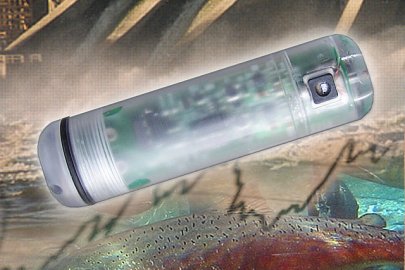 Under the HydroPASSAGE project, PNNL and ORNL are providing new information that can be used to increase fish survival and lower operational costs.
Under the HydroPASSAGE project, PNNL and ORNL are providing new information that can be used to increase fish survival and lower operational costs. -
The Electric Power Institute (EPRI) has successfully automated identification processes for young American eel tracked with multi-beam sonar.
-
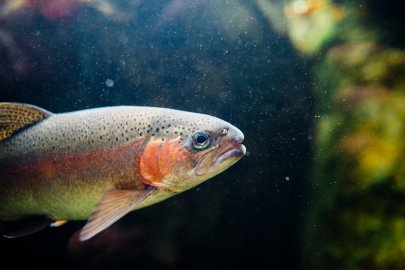 PNNL has completed the development of new, highly miniaturized fish-tags, able to be quickly injected, even into tiny juvenile eel and lamprey.
PNNL has completed the development of new, highly miniaturized fish-tags, able to be quickly injected, even into tiny juvenile eel and lamprey. -
 In 2020, three winners were selected for the Fish Protection Prize, a competition soliciting ideas to protect fish from water infrastructure.
In 2020, three winners were selected for the Fish Protection Prize, a competition soliciting ideas to protect fish from water infrastructure. -
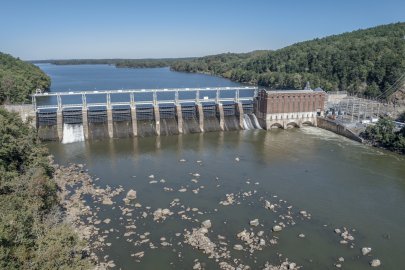 In late 2019, PNNL’s new autonomous, mobile, water quality sensor platform was field-tested for the first time.
In late 2019, PNNL’s new autonomous, mobile, water quality sensor platform was field-tested for the first time. -
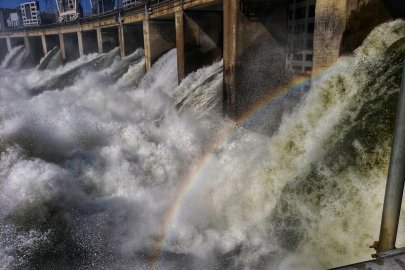 In 2019, PNNL successfully identified techniques to reduce cavitation erosion, improving performance and service life of hydropower components.
In 2019, PNNL successfully identified techniques to reduce cavitation erosion, improving performance and service life of hydropower components. -
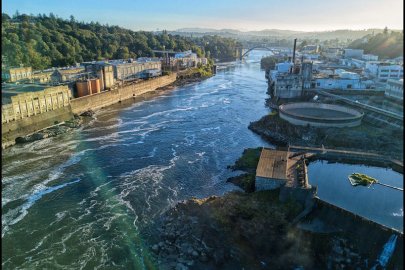 WPTO published the U.S. Hydropower Market Report, which compiled data from public and commercial sources as well as DOE R&D projects.
WPTO published the U.S. Hydropower Market Report, which compiled data from public and commercial sources as well as DOE R&D projects. -
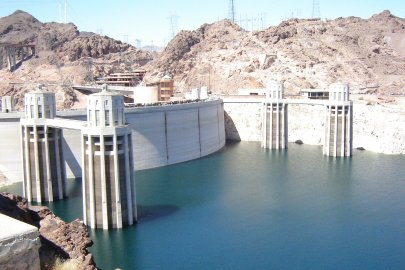 In December 2020, WPTO announced 11 winners of the I AM Hydro Prize, a competition designed to help strengthen hydropower technologies.
In December 2020, WPTO announced 11 winners of the I AM Hydro Prize, a competition designed to help strengthen hydropower technologies. -
Pennsylvania State University has manufactured and validated a novel hydropower turbine-generator which can be deployed at various low-head sites.
-
An Archimedes Hydrodynamic Screw turbine, using composite materials and advanced manufacturing methods, is reducing costs and improving efficiency.
Marine Energy Program 2019-2020 Accomplishments
-
 WPTO’s Powering the Blue Economy™ initiative has granted more than 85 awards and built new partnerships to catalyze innovation in marine energy.
WPTO’s Powering the Blue Economy™ initiative has granted more than 85 awards and built new partnerships to catalyze innovation in marine energy. -
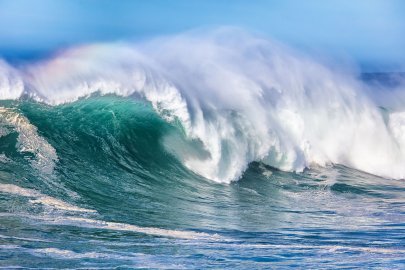 The Waves to Water Prize is a five-stage prize to accelerate the development of small, modular, wave-powered desalination systems.
The Waves to Water Prize is a five-stage prize to accelerate the development of small, modular, wave-powered desalination systems. -
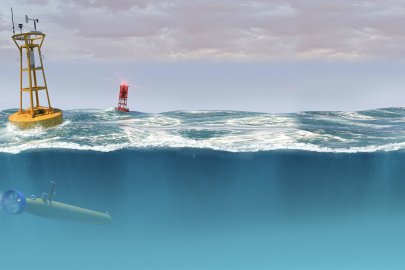 The Ocean Observing Prize is a competition designed to incentivize the development of marine energy-powered, self-charging ocean observing platforms.
The Ocean Observing Prize is a competition designed to incentivize the development of marine energy-powered, self-charging ocean observing platforms. -
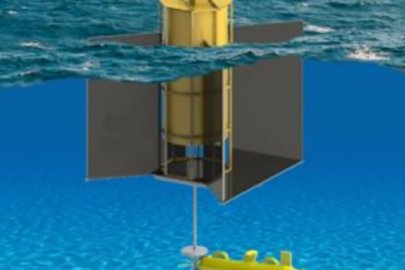 The Marine Energy Collegiate Competition is challenging university students to propose technical solutions and business cases for marine energy.
The Marine Energy Collegiate Competition is challenging university students to propose technical solutions and business cases for marine energy. -
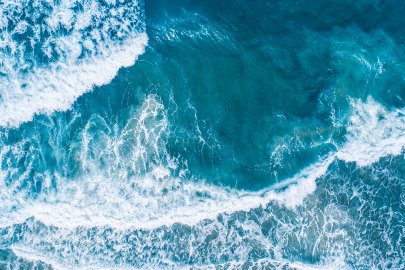 Oregon State University has completed the design phase of PacWave South, a grid-connected and pre-permitted wave energy test facility.
Oregon State University has completed the design phase of PacWave South, a grid-connected and pre-permitted wave energy test facility. -
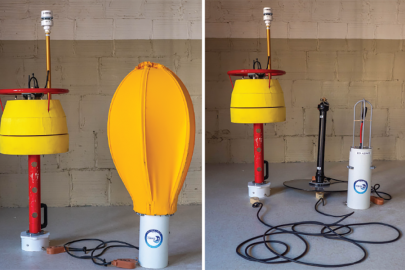 The PNNL-led Triton Initiative is supporting the development of more precise and cost-effective marine energy environmental monitoring technologies.
The PNNL-led Triton Initiative is supporting the development of more precise and cost-effective marine energy environmental monitoring technologies. -
In September 2020, on behalf of the International Energy Agency’s OES collaborative, PNNL released the 2020 State of the Science Report.
-
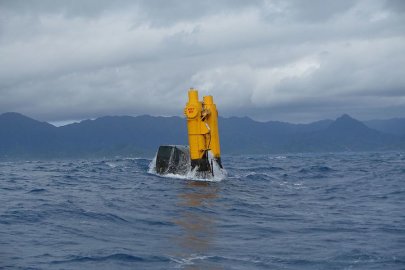 Sandia National Labs has released reports, open-source codes, and trainings to help quantify MRE device interactions and noise in marine environments.
Sandia National Labs has released reports, open-source codes, and trainings to help quantify MRE device interactions and noise in marine environments. -
From 2014 to 2020, Sandia National Labs and MRE developer Re Vision Consulting investigated advanced controls techniques in wave energy systems.
-
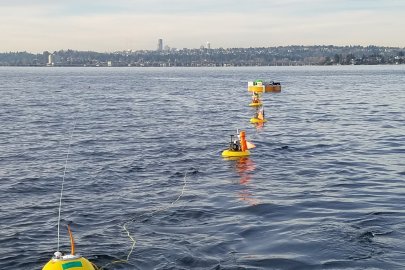 In 2020, WPTO’s multi-lab resource characterization project released the highest resolution, most comprehensive wave dataset publicly available.
In 2020, WPTO’s multi-lab resource characterization project released the highest resolution, most comprehensive wave dataset publicly available. -
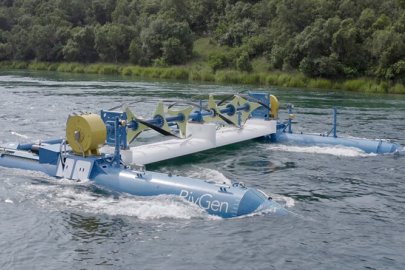 In 2019, the Alaskan village of Igiugig worked with Ocean Renewable Power Company to deploy the RivGen® Power System.
In 2019, the Alaskan village of Igiugig worked with Ocean Renewable Power Company to deploy the RivGen® Power System. -
In 2019, NREL completed a multi-year system design and validation project with Columbia Power using the 5-megawatt dynamometer.
-
In 2020, Verdant Power deployed their fifth generation Free Flow System turbines with their new TriFrame™ mount in New York’s East River.
-
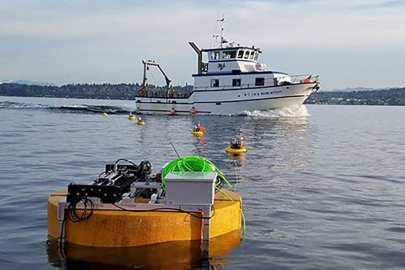 WPTO supported the creation of PRIMRE, a Portal and Repository for Information on Marine Renewable Energy.
WPTO supported the creation of PRIMRE, a Portal and Repository for Information on Marine Renewable Energy. -
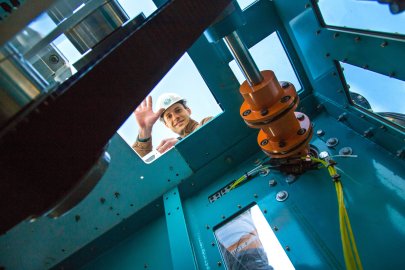 In 2020, NREL released new STEM and workforce development portals for both marine energy and hydropower.
In 2020, NREL released new STEM and workforce development portals for both marine energy and hydropower.


